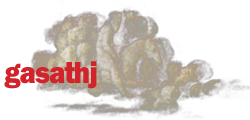interview with Celestino Soddu about creativity and AI
- Published 2022-06-06 16:02 - (3220 Reads)AI and the Creative Industries research study
Dr. Kristofer Erickson (smcke@leeds.ac.uk)
University of Leeds, UK
Interview with Celestino Soddu, Professor, Architect
(celestino.soddu@polimi.it)
www.soddu.it
www.generativedesign.com
www.generativeart.com
As the use of artificial intelligence becomes more widespread in the creative industries, we are faced with understanding the significance of these technologies in cultural production. For example, what is the ontological status of a creative work generated by a computer? Are original works of “authorship”? Or are they better understood as network texts, reflecting back on a vast galaxy of previous expressions? How does creative work change when human and artificial processes are combined? What skills are required and what aesthetic standards should apply? The advent of AI is experienced differently across mediums including film, music, photography, interactive games and – the focus of this interview – architectural design, in varying ways and with significant effect. This research project, “AI and the Creative Industries” aims to better understand actual creative practices involving human and computer collaboration. By the term “actual”, we mean observation and recollection of lived experience of creative work in specific settings and contexts. Much of the existing literature on the topic is speculative or anecdotal, and thus has limited utility for characterising the production, distribution and consumption of creative products made with the assistance of AI.
Preliminary findings from this research leads in some productive new directions and raises new questions. Reports from other cases across mediums suggest that AI technologies are reshaping creative work along several axes. First, respondents report that rather than operate as a labour-saving tool, AI use involves intensive human labour at new points in the creative production chain, including in the “search” and “inception” stages as well as in post-production of AI outputs. Respondents have noted changes to the professional landscape and interaction between firms, clients, and user communities. AI technology has fostered new collaborations across fields, including with computer and data science, sometimes located within key individual polymaths, or more frequently obtained through inter-firm relationships or IP in-licensing. Recent forms of AI production such as machine learning (ML) require significant quantities of “data”, consisting of creative inputs sometimes owned by other upstream authors. At the same time, creative workers report significant investment of creativity and autonomy in their own choices related to curating and training AI to produce useful new works. Assertion of individual autonomy and creative choice is in tension with the networked, data-intensive nature of AI-assisted production.
The following interview with Professor Celestino Soddu is a unique outlier within the ongoing research dataset in several important ways. While many current ML and neural-network based approaches report using externally-sourced data as training sets, the work pioneered by Prof Soddu is part of an earlier phase of ground-breaking generative work based on algorithmic transformation. In that sense, this work perhaps shares similarities to early experiments with computational generation, such as Harold Cohen’s AARON project. Another original aspect raised by this interview is that the field of architecture has been underrepresented so far among the case studies, which is more predominantly populated with examples from music, photography, and interactive media. I am grateful for the opportunity to interview Prof Soddu about his pioneering work in this field and for his insights into the central question, “what is it like to create alongside a computer?”
